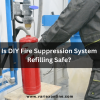![]()
Fire Immuniser
+91-7829629111
Email: info@variex.in
Varistor Technologies Pvt. Ltd.
Block-1, First Floor, Ardente Office One, Hoodi Circle, ITPL Main Road, Bengaluru, Karnataka 560048, IN
How To Decide The Fire Hydrant System Requirement For Industry
Ensuring fire safety within industrial facilities is paramount to protecting assets, employees, and surrounding communities. Among the critical components of a comprehensive fire protection strategy is the installation of a fire hydrant system. These systems provide firefighters with immediate access to water, facilitating the rapid suppression of fires and mitigating potential damage.
Determining the appropriate fire hydrant system requirement for an industry involves a systematic assessment of various factors, including property size, fire risk factors, water supply availability, and compliance with industry standards and regulations. By carefully evaluating these aspects and consulting with fire safety experts, industries can design and implement effective fire hydrant systems tailored to their specific needs and risks.
Determining the fire hydrant system requirements for an industry is a critical aspect of fire safety planning. Here's a comprehensive guide to help industries make informed decisions:
1. Conduct a Risk Assessment:
- Begin by conducting a thorough risk assessment of the industry premises. Identify potential fire hazards, such as flammable materials, electrical equipment, and storage areas.
2. Consider Industry Standards and Regulations:
- Familiarize yourself with relevant industry standards and regulations governing fire safety, such as the National Building Code of India (NBC) and the Factory Act. These standards provide guidelines for fire protection measures, including fire hydrant systems.
3. Assess Property Size and Layout:
- Evaluate the size and layout of the industry premises to determine the extent of fire hydrant coverage needed. Consider factors such as building dimensions, floor plans, and the presence of multiple buildings or compartments.
4. Determine Fire Risk Factors:
- Assess the specific fire risk factors associated with the industry, including the type of materials stored or processed, the presence of hazardous substances, and the potential for ignition sources. This information will help determine the level of fire protection required.
5. Analyze Water Supply Availability:
- Evaluate the availability and adequacy of water supply for firefighting purposes. Determine whether the industry premises are served by a municipal water supply or if alternative water sources, such as reservoirs or tanks, are needed.
6. Calculate Hydraulic Requirements:
- Calculate the hydraulic requirements for the fire hydrant system based on factors such as water demand, flow rates, and pressure requirements. This information will help determine the size and capacity of pumps, pipelines, and hydrants needed.
7. Consider Operational Factors:
- Take into account operational factors that may impact the design and implementation of the fire hydrant system, such as accessibility for firefighting vehicles, maintenance requirements, and system reliability.
8. Consult with Fire Safety Experts:
- Seek advice and guidance from qualified fire safety professionals, such as fire protection engineers or consultants. They can provide valuable insights and recommendations tailored to the specific needs and risks of the industry.
9. Design and Install the System:
- Based on the findings of the risk assessment and hydraulic calculations, design and install a fire hydrant system that meets the industry's requirements and complies with relevant standards and regulations. Ensure proper placement of hydrants, pipelines, valves, and other components.
10. Train Personnel and Conduct Drills:
- Train industry personnel in fire safety procedures and the use of fire hydrant systems. Conduct regular fire drills and exercises to ensure that employees are familiar with emergency protocols and can respond effectively in the event of a fire.
| Factors to Consider | Description |
|---|---|
| Risk Assessment | Identify potential fire hazards and assess the specific fire risk factors associated with the industry premises. |
| Industry Standards | Ensure compliance with relevant industry standards and regulations governing fire safety to meet guidelines and legal requirements. |
| Property Size and Layout | Evaluate the size and layout of the industry premises to determine the extent of fire hydrant coverage needed. |
| Fire Risk Factors | Analyze the type of materials stored or processed, presence of hazardous substances, and potential ignition sources to determine protection requirements. |
| Water Supply Availability | Evaluate the availability and adequacy of water supply for firefighting purposes to ensure sufficient water for fire hydrant systems. |
| Hydraulic Requirements | Determine the hydraulic requirements based on water demand, flow rates, and pressure to size pumps, pipelines, and hydrants. |
| Operational Factors | Consider factors such as accessibility, maintenance requirements, and system reliability when designing the fire hydrant system. |
| Consultation with Experts | Seek advice from qualified fire safety professionals to receive guidance and recommendations tailored to industry-specific needs and risks. |
| Design and Installation | Design and install a fire hydrant system that meets industry requirements, complies with standards, and ensures proper component placement. |
| Personnel Training and Drills | Train industry personnel in fire safety procedures and conduct regular drills to ensure familiarity with emergency protocols and system usage. |
By following these steps and considering the specific needs and risks of the industry, businesses can make informed decisions when determining the fire hydrant system requirements for their premises, thereby enhancing fire safety and protecting lives and property.
Frequently Asked Questions
A fire hydrant system is a network of pipes, valves, hydrants, and pumps designed to provide firefighters with immediate access to water in the event of a fire. It is crucial for industries to have fire hydrant systems installed to facilitate rapid fire suppression and minimize potential damage to property and personnel.
Determining the fire hydrant system requirement involves assessing various factors such as property size, fire risk factors, water supply availability, compliance with industry standards, and operational considerations. Consulting with fire safety experts can provide valuable insights and recommendations tailored to your industry's specific needs.
Determining the fire hydrant system requirement involves assessing various factors such as property size, fire risk factors, water supply availability, compliance with industry standards, and operational considerations. Consulting with fire safety experts can provide valuable insights and recommendations tailored to your industry's specific needs.
To ensure compliance, familiarize yourself with relevant industry standards and regulations governing fire safety, such as the National Building Code of India (NBC) and the Factory Act. Seek guidance from qualified fire safety professionals to ensure that your fire hydrant system meets all requirements.
Fire hydrant system installation requires specialized knowledge, skills, and equipment. It is highly recommended to hire qualified fire safety professionals with experience in designing and installing fire hydrant systems to ensure compliance with safety standards and regulations.
Final Say
We at VariEx.in or Variexonline.com have mastered the art of designing, installing, inspecting, and fixing automatic sprinkler systems with the help of our in-house team, which is capable of delivering the fire sprinkler services you need, whether large or small and at affordable cost.
To schedule a fire sprinkler installation, or you think our services could benefit your commercial property, contact us online or give us a call at, 7829629111










